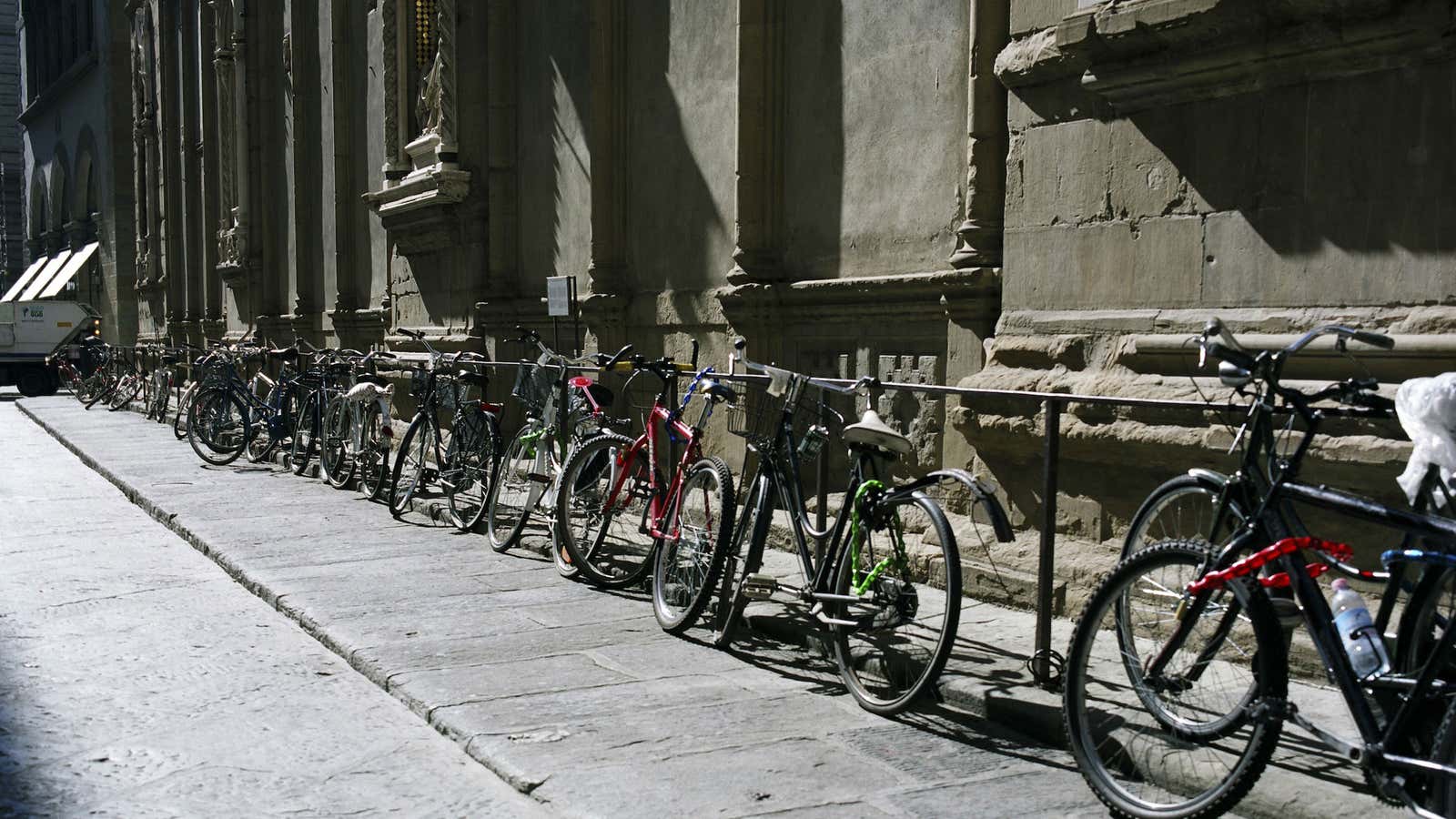The birthplace of the Alpha Romeo and Ferrari is shunning cars for bikes.
Last year, sales of bicycles in Italy outpaced those of cars for the second year in a row, by a quarter million, according to Italian officials. ”There is a silent revolution taking place on two wheels in our cities,” Erasmo D’Angelis, Italy’s transport undersecretary said on May 24. “It’s a true and proper boom of people using bikes as a daily mode of transportation.”
The shift has been dramatic. Car sales outpaced those of bicycles for almost 50 years until 2011, with most Italians commuting to work via cars, motorized scooters and public transportation. In 2001, for example, 66% of workers (pdf, p. 4) commuted to work by car. In 2010, the country was home to 68 cars per 100 people, compared with 80 per 100 in the United States, making Italy one of the biggest car-owning countries per capita in the world, according to the World Bank.
So what happened? Italian government austerity measures, unemployment and high petrol prices. By the end of last year, the country had the world’s second highest number of bike share programs, after Spain and ahead of France. Turin and Milan have world-renowned bike share programs, and Florence is considering one too (link in Italian).
But bike share programs require ongoing investment. In Rome, a bike share program in 2008 was aborted after too many bicycles were stolen. Giuletta Pagliaccio, head of the Italian Federation of Friends of the Bicycle, told Agence France Press that Rome and many cities in the south of the country have poor roads and not enough bicycle paths. In dense urban cities like Rome, trails flood easily and clutter blocks bike traffic. Even bicycles aren’t immune to austerity.
